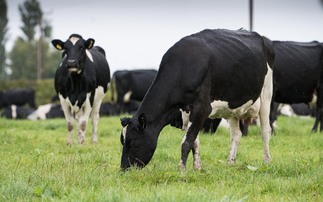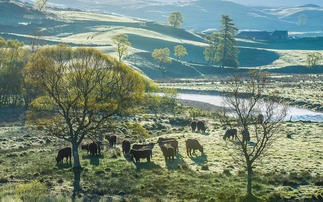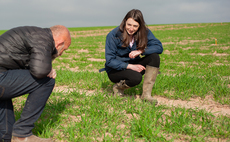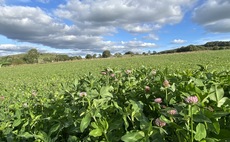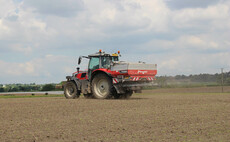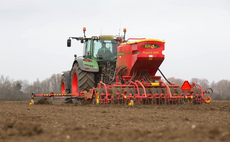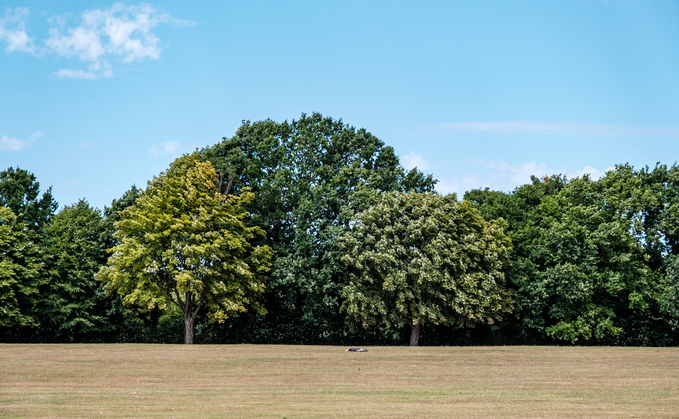
Despite grassland being quite resilient, it took a battering in summer 2022 which weakened the swards and left many vulnerable to pests and diseases. Some TLC might be needed to recoup their value, says Limagrain's John Spence .
Grasses will have struggled under prolonged drought and with their system was weakened, there may be gaps where pests had and still have freer access. "They may be more prone to disease too such as mildew and rusts," says Mr Spence Spence. "Some farmers are going into this season with some very ‘patchy' swards."
He advises farmers to look at the state of grass swards. "Have a close inspection and see if there are bare patches, big gaps and moss in swards."
A sustainable sward needs more than 80% of sown species, typically ryegrasses and perhaps clover. "If there's less, but between 80% and 50%, then the sward needs some attention - perhaps some overseeding or slot seeding to get it back on track.
"If there's less than 50% of sown species, then a full reseed is likely to be the only solution."
Mr Spence admits that some get ‘hung up' on identifying all the weeds, but this isn't necessary. "You just need to check the proportion of sown species to evaluate the sward's potential."
He suggests farmers tug some plants out of the ground. They should be tough to pull out, but if they come out easily their roots are weakened and there may be pest infestations like nematodes, wireworms or leatherjackets.
Farmers should also check for compaction. "There may be affected areas due to machinery or cow routes. Grass can't thrive in these conditions as root development and nutrient exchange is restricted. So, take a spade, dig a hole and look at the soil structure." He recommends using a sward lifter to overcome any compaction in affected areas.
|
State of the grass - questions to ask · Inspect the swards in early spring; look for gaps and moss · Look for more than 80% of sown species (typically ryegrasses) · Consider grass renovation if there's 50% to 80% of sown species · A reseed may be necessary if there's less than 50% of sown species · Check for evidence of pest damage and disease · Check for compaction - dig a hole and look at the soil structure |
The ‘bare' facts
Mr Spence describes last year's conditions as premature ageing for some swards. "As a sward gets older, or if it's faced adverse conditions, the proportion of productive species will decrease. Grass varieties lose their vigour and the increasing threat of weeds will make the crop less palatable, less digestible and less responsive to fertiliser.
"A new ley should have a high ryegrass content, usually above 90%. By eight years old, this could have dropped to 40% and by 10 years old it is possible that only 10% of the sward will be ryegrass."
Less productive swards will have lower energy output. AHDB Dairy data shows that a two-year-old ley yielding 13.5t/ha at 12ME will drop to 11.2t/ha and 11.5ME by year five. In year 11, yields will be almost half that of year two.
"The cost a full reseed will be recouped through energy from new grass leys within four years."
Once farmers know the condition of their swards, they can decide on the required renovation or reseeding required to get their swards back on track
"Renovations can be done in spring, but another window of opportunity is after a silage cut when the sward is fairly open, ideally after second cut when the existing grass will be less likely to compete with the new seedlings. The pasture renovation environment can be quite hostile compared with that of a reseeding environment.
"Reseeds are best after a fallow period or in a rotation and following a cover crop or arable crop, so the pest cycle is broken."
Seed selection
Choice of mixture will have a bearing on the success of the sward repair. "Look at the seed choices and go for one of the more advanced mixtures now available that offer improved yield and feed values and have the data to support it. Paying a bit more is very easy to justify - the preparation cost of a reseed or renovation is the same, so there's no point in compromising when it comes to seed mixture selection.
"And there are mixtures - like those with LGAN-accreditation that have improved fibre content and digestibility and have been shown to improve milk yields and meat production."
Producers in more drought prone areas might look at lucerne, or plantain and chicory. "There's no saying we're going to get a long dry summer like that of 2022," adds Mr Spence.
"We are encouraging farmers to review their forages and swards and see what they've got. Some reseeding and renovation work may well be what's needed, and farmers could use this as an opportunity to lift productivity from their home-grown forages."
PANEL - buyers guide to grass mixtures
Decide on a long, medium or short-term mixture.
Consider location - a long term ley mixture might suit a far-off awkward area.
Choose a mixture designed for its purpose - cutting, grazing or dual-purpose.
Select grass seed mixtures from reputable seed houses, with trial data to prove its potential.
Avoid commodity grass seed mixtures, especially this season. The dry summer hit seed production and there may be some lower cost, lower spec mixtures on the shelf.
Consider crops like lucerne, plantain or chicory for drier areas, and a summer hybrid brassica for grazing in mid-summer, between grass crops or to let the grass recover.













